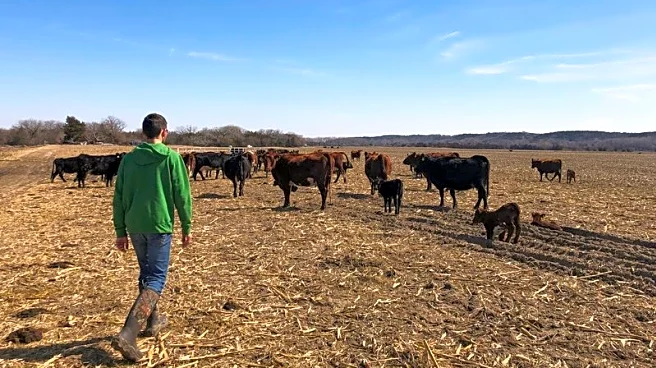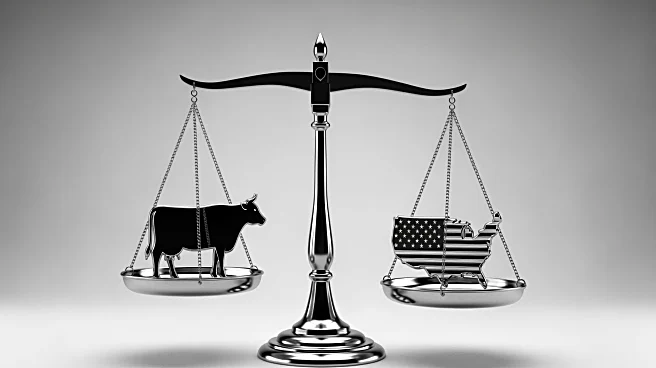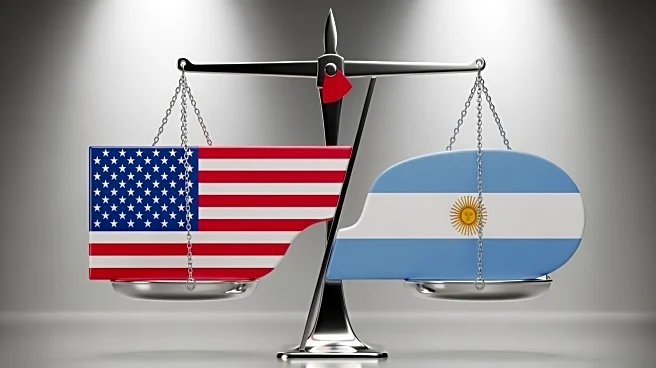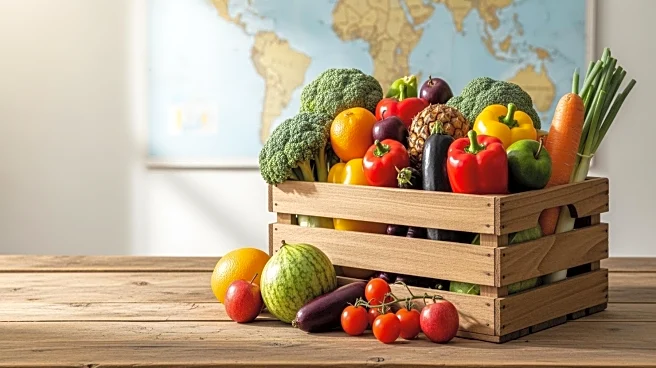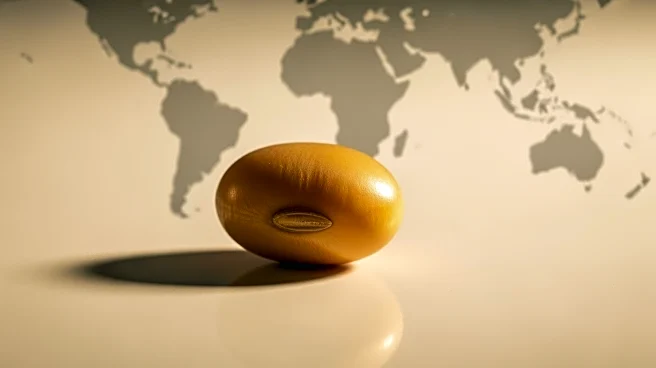What's Happening?
The U.S. livestock markets experienced gains as December live cattle prices rose by $1.78 to $245.43 per hundredweight, and January feeder cattle increased by $1.10 to $370.28 per hundredweight. December lean
hogs also saw an increase of $1.20, reaching $83.28 per hundredweight. This uptick in livestock futures comes after Secretary of Agriculture Rollins announced a new package aimed at boosting domestic beef production. This announcement marks a shift from earlier in the week when President Trump suggested an increase in beef imports from Argentina. The proposal, while lacking detailed information, has provided some support to the cattle market, which is already benefiting from tight inventories and a rally in boxed beef prices.
Why It's Important?
The announcement of a new package to enhance U.S. beef production is significant as it could impact domestic beef supply and prices. The initial suggestion of increased imports from Argentina had raised concerns about potential oversupply and its effects on U.S. cattle producers. By focusing on domestic production, the new proposal may help stabilize the market and support local producers. However, the lack of specifics in the proposal has limited its immediate impact on market sentiment. The broader implications include potential shifts in trade dynamics, particularly with Argentina and China, as the U.S. navigates its beef import and export strategies.
What's Next?
The livestock market will likely continue to monitor developments regarding the new beef production package. Stakeholders, including cattle producers and industry analysts, will be keen to see detailed plans and potential government support measures. The response from international trade partners, particularly Argentina and China, will also be crucial as the U.S. adjusts its beef import and export policies. Additionally, the market will watch for any further comments or policy shifts from President Trump that could influence future trade and production strategies.
Beyond the Headlines
The proposal to boost domestic beef production raises questions about the long-term sustainability of U.S. cattle inventories and the balance between imports and domestic consumption. Ethical considerations regarding animal welfare and environmental impacts of increased production may also come into play. Furthermore, the geopolitical implications of shifting trade relationships with Argentina and China could have broader economic and diplomatic consequences.


